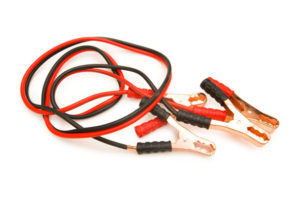First Step in Turnaround—the most evangelistic task you can undertake
Identify your attendance baseline with a chart/graph of weekly worship attendance. Overlay 2-3 years with a different colored line for each year on the same graph to identify trends.
A General Observation—There will be Highs and Lows. Not everyone attends every week so there will be fluctuations from week to week and from season to season.
Another Observation—Spring and Fall Spikes are likely. This remains a tendency in most churches where Easter/Mother’s Day traditions likely generate a larger attendance. In the same way often in the Fall there will be a higher attendance pattern prior to the Holidays.
When you establish your multi-year chart you will discover your church’s attendance culture indicated by the trend lines on the chart.
Second Step in Turnaround—making your record keeping more personal.
List all those people who attend worship at least once every 6-8 weeks.
Be sure to collect: Name, Address, Cell phone, E-mail, Facebook
This identifies the crowd and prepares you to evangelize and disciple them.

- COMMUNITY – A Community person is committed to NOT ATTENDING church.
- CROWD – A Crowd person is committed to ATTENDING church—at least once in awhile.
- CONGREGATION – A Congregation person is committed to a SMALL GROUP
- COMMITTED – A Committed person is committed to HABITS necessary for spiritual growth.
- CORE – A Core person is committed to MINISTRY
Third Step in Turnaround
Consider total weekly participation if you offer more than Sunday Morning Worship. Check Class Rosters, Program Attendance (Wednesday night, etc.) and Worship Attendance to compile an overall weekly attendance. This is not cumulative weekly where one person is counted for every event they attend. Overall weekly attendance counts each person only one time only even if they attend 10-12 different events per week.
Fourth Step in Turnaround
Connecting with the Crowd — Everyone needs to be invited to some all-church entry point function frequently enough so that you stay on their radar but not so frequently as to become a nuisance.
The power of a generic post card. They told me about it 5 years after I left the church. A 30-something young lady came to the church traumatized by a cancer diagnosis that was grim. She returned to the church because “they sent me a personal invitation”. She explained that she had moved a couple of times in the previous few years but that she always returned that invitation to her refrigerator. The pastors lead her to faith in Christ and comforted her in her last months. They showed be that personal invitation. It was a simple card stock post card invitation we had printed on our copier and mailed bulk rate but it was part of a plan that worked.
Crowd Connections by using a Communication Plan
- Develop a mailing list/contact list
- Use that mailing/contact list to connect with everyone on a regular schedule.
- Social Media Platforms assist here.
- Special Occasion Connections that can bolster high attendance trends need special attention.
- Make Guest Connections a priority by considering Nelson Searcy’s Fusion or Tyler Smith’s TextinChurch.
JUMPSTART YOUR MINISTRY: Develop a Comprehensive List of all Attenders and Use it!
 Phone Tree—my mother-in-law was part of the largest Sunday School class that weekly produced the largest offering for the church budget in a large Southern Baptist church. Every Saturday class leaders took turns connecting with everyone by a simple phone call “Have you had a good week?” “Will you be in class tomorrow?” When will it be your turn next to help with refreshments?”
Phone Tree—my mother-in-law was part of the largest Sunday School class that weekly produced the largest offering for the church budget in a large Southern Baptist church. Every Saturday class leaders took turns connecting with everyone by a simple phone call “Have you had a good week?” “Will you be in class tomorrow?” When will it be your turn next to help with refreshments?”
What if a monthly phone tree process was used so that 10 or 12 volunteers could make 6-8 calls each to encourage everyone to attend on a particular Sunday?


